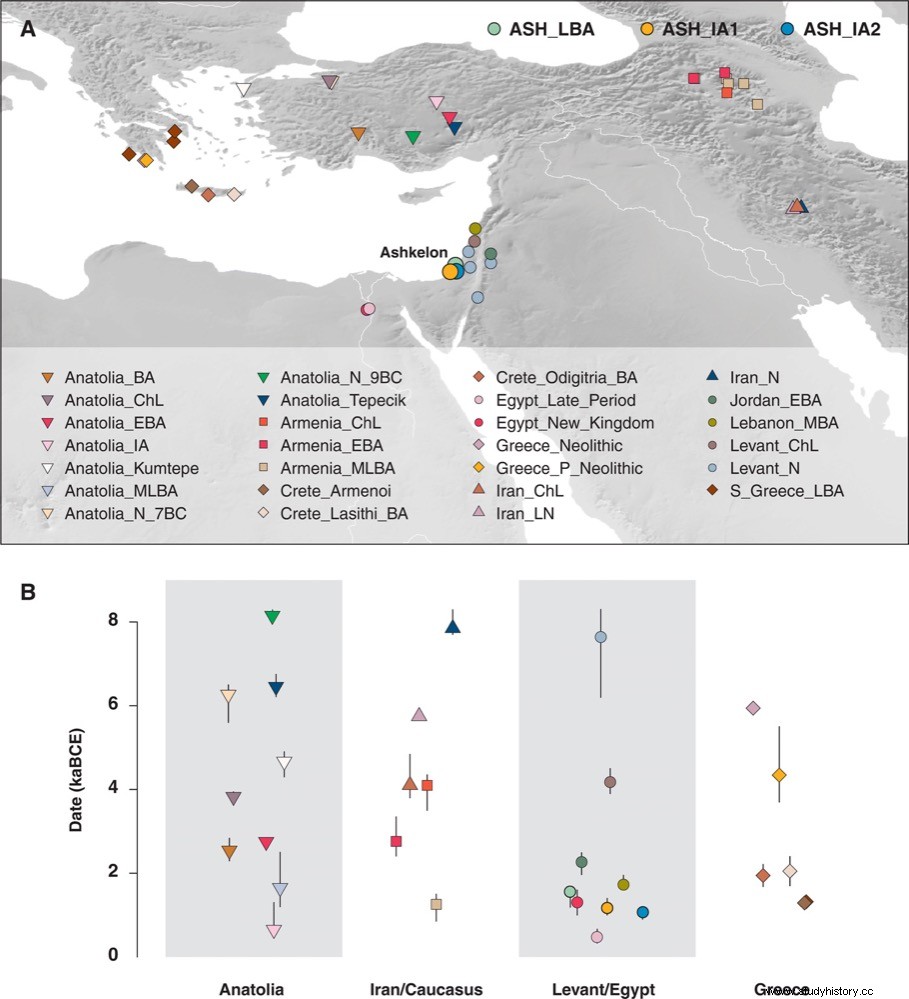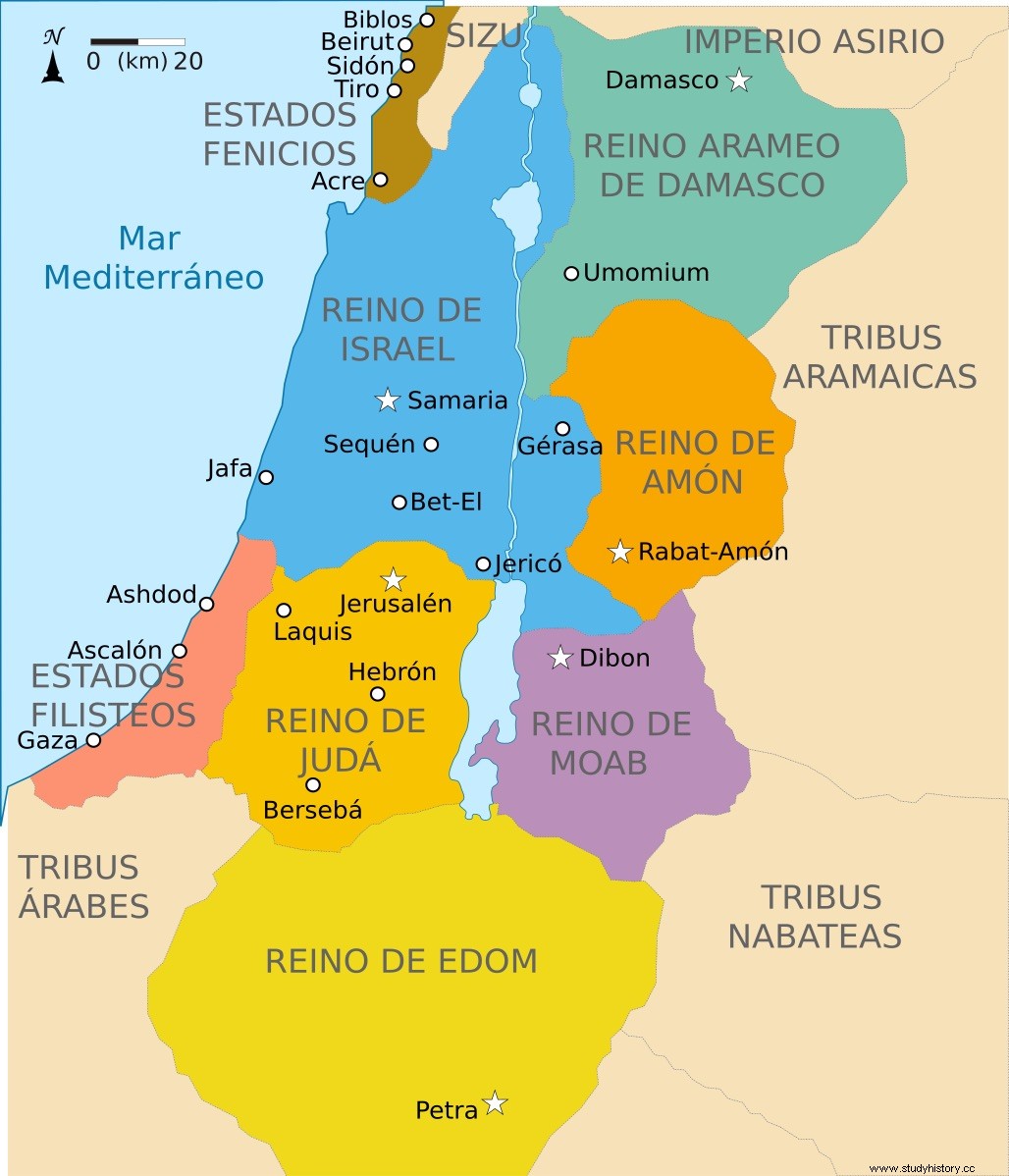A study published in Science Advances by an international team made up of researchers from the Max Planck Institute, Harvard University and the University of Seoul, among others, suggests that the Philistines, the people who appear in the Bible as enemies of the Israelites, were immigrants from Europe who arrived to the region in the 12th century BC
The team analyzed samples of human remains found in excavations in the port city of Ashkelon over the past 30 years, finding that a substantial proportion of their ancestry came from European populations. This ancestry was introduced to Ashkelon around the time of the arrival of the Philistines in the 12th century BC.
According to the researchers the early Iron Age population was genetically distinct (from that of the Bronze Age) due to admixture related to Europe. This genetic signal is no longer detectable in the later Iron Age population , which would indicate the existence of a migratory event during the transition from the Bronze Age to the Iron Age.

For a long time this philistine phenomenon has been associated with with the migrations of the peoples of the sea from points of the Aegean. Now the proposed links reach as far as northern Italy, where depopulation events have been suggested to trigger migratory movements across the Mediterranean.
According to the Book of Joshua , the land of the Philistines lay to the southwest, made up of the five city-states of Gaza, Ashkelon, Ashdod, Ekron, and Gath, from the Wadi Gaza in the south to the Yarkon River in the north. For this reason, the area was later called Palestine by the Greeks. (ie, the land of the Philistines).
The conflict between the Israelites and the Philistines is recounted in the Bible, where perhaps the best known examples are David's fight against the Philistine Goliath (in Samuel 17) or Samson's fight against the Philistines (in Judges 15). 
According to one of the study's authors, Dr. Adam Aja, the DNA of children buried in the Philistine homes of Ashkelon revealed that their genetic heritage did not come from the local population . Michael Feldman of the Max Planck Institute and the study's lead author said the genetic distinction is due to the Europa-related flow, which is known to have been introduced into Ashkelon during the late Bronze Age or early Middle Ages. Iron. This calendar agrees with estimates of the arrival of the Philistines on the Levant coast, based on archaeological and textual records .
According to Daniel Master, director of the excavations, we not only have the radiocarbon envelope, which proves the age of the samples, but also the stratigraphic evidence. These samples come from carefully excavated contexts, connected to artifacts that can be precisely dated .
However the study indicates that in no more than two centuries, this genetic imprint introduced during the early Iron Age is no longer obnoxious and appears to be diluted within a local Levantine gene pool . Also that while our model suggests a southern European genetic origin as a plausible source, future sampling in regions such as Cyprus, Sardinia and the Aegean, as well as the southern Levant, could better resolve this issue .
